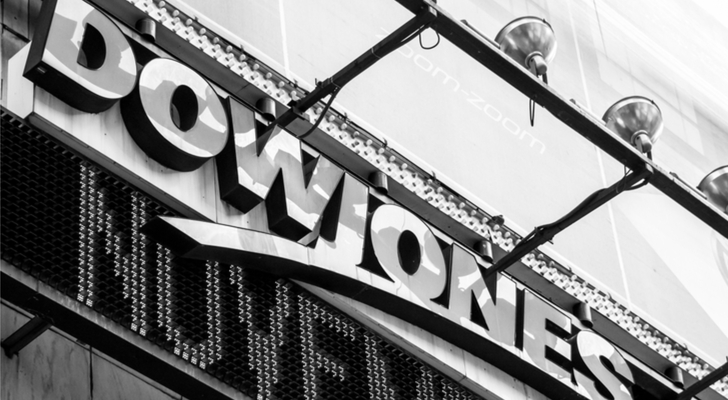If you’re trying to find an adjective to describe the Dow Jones Industrial Average, the best proxy for which is the SPDR Dow Jones Industrial Average ETF (NYSEARCA:DIA), it would be “volatile”. This volatility is indicative of several things, all of which you need to be aware of, none of which you are likely prepared to deal with in your portfolio.
The Dow Jones index was on a wild ride in February, calmed down for little while, the past few days has gone bonkers. The previous seven trading days have seen the following trading ranges for the Dow, as far as points go: 450, 153, 322, 588, 600, 491, and 738.
The Dow Jones index has gone through periods of volatility ever since the index was first created. What’s important in this particular case however, is why we are seeing this particular degree of volatility in the Dow Jones today, and what it means for your portfolio.
A Look at the Dow Jones Index
Although the Dow Jones index is nearly 30 stocks, we are seeing equivalent volatility and all the other major indices. Volatility is driven by emotion. To a certain extent, the volatility is also due to computer trading programs and algorithms. But it is emotion that is something all investors need to be prepared for.
The catalyst for movements like this is usually something existential. There is concern over a trade war, concern about rising rates, and the privacy issues concerning Facebook Inc. (NASDAQ:FB). This can all cause varying degrees of upset in the market. For example, Facebook stock is taken quite a beating recently over these privacy and data issues.
Investors and institutions get nervous (emotion), sell the stock, and because Facebook is a large part of several indices, those indices start to fall. That triggers concern for investors and also triggers various consumer programs and creates more selling, particularly in the FANG stocks.
Before long, investors and institutions see the huge declines, and join the selling.
However, the other thing that we seen recently is that large declines have been met by a stampede back into the markets, and dip buyers push the stocks back up again.
Recent Action in the Dow
What you probably have noted is none of this has to do with the underlying fundamentals of most stocks. Sure, issues regarding Facebook may very well contaminate Twitter Inc. (NASDAQ:TWTR) and
Alphabet Inc. (NASDAQ:GOOGL). But otherwise the markets are going haywire, and that creates havoc in stocks where there has been no news.
So even though the Dow stocks in the Dow Jones only represent a teeny part of the entire market, it’s psychological and emotional effect is very large.
How do you deal with all of this volatility? You must have a long-term investment horizon of at least 10 years. You must be comfortable with the fact that the stocks and other securities that you’ve chosen for your portfolio create a truly diversified set of holdings.
However, I bet that 99% of portfolios are not nearly as diversified as they need to be.
The Bottom Line: Diversity
If you’ve been following my column lately, you know that to combat this kind of volatility, you need to have a substantial number of alternative investments and non-correlated assets in your portfolio. This is going to tamp down the overall volatility of your portfolio.
The Liberty Portfolio, my investment advisory newsletter, takes this exact approach. Every month I add three new securities to the portfolio, and the goal is to deliver a return that beats the annual cost-of-living adjustment that most Americans face, with less volatility than the market has.
That cost-of-living adjustment, by the way, is not the CPI. It is not the roughly 3% target that the government talks about. It’s actually closer to 8% to 10%.
So if you find yourself suffering and worried on days like we seen in the past week, and what we saw in February, you should be. Because your portfolio is probably not prepared for it, and emotionally, you probably are not either.
Lawrence Meyers is the CEO of PDL Capital, a specialty lender focusing on consumer finance and is the Manager of The Liberty Portfolio at www.thelibertyportfolio.com. He does not own any stock mentioned. He has 23 years’ experience in the stock market, and has written more than 2,000 articles on investing. Lawrence Meyers can be reached at TheLibertyPortfolio@gmail.com.

